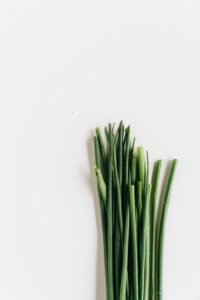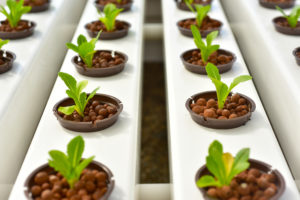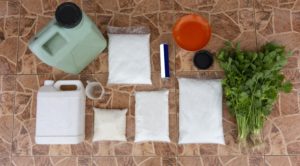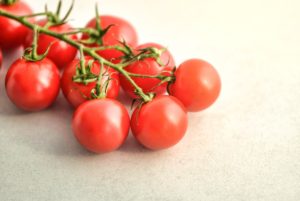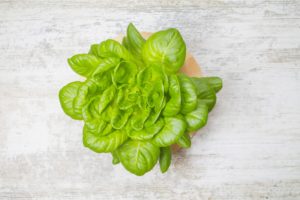Want to Grow Hydroponic Chives? Here’s the Guide
Chives are a staple in any kitchen, and if you’re like most people, you’re getting sick of the dried kind. When you grow hydroponic chives, you get the best of their flavor. Not only that, you’re also growing an easy, profitable crop right in your own hydroponic garden! Chives could definitely be grouped with herbs and leafy greens in terms of easy growing. Why not start your own fresh garden, with all the benefits of hydroponics?
Hydroponic Chives: the Basics
Chives may be fairly easy to grow, but if you understand the basics you can make a real profit.
-

You can grow hydroponic chives at home Ideal EC: 1.8-2.2
- Wide pH tolerance from 6.1 to 7.8 (although 6.1 to 6.8 is ideal)
- Temperature tolerance: 65 to 80 degrees fahrenheit
- Need at least 12+ hours under grow lights each day
- Part of the onion family (with garlic)
- Best grown from clumps, but can be grown from seed
- Harvest every 2-3 weeks
- One of the most profitable hydroponic plants
- Common and garlic chives are most planted
- Naturally insect and pathogen repellent
- Best hydroponic systems: Ebb and flow, drip, NFT, raft, or towers
- Grow year round
Starting Hydroponic Chives
When you start growing hydroponic chives, you have a couple choices on how you start. Like most other plants, you can start them from seeds. If you start with seeds, they need about four weeks before you can transplant them. Then, count on at least another three or four weeks before they’re ready to harvest. Plant seeds in moistened media, and keep the temperature between 60 and 70 degrees. When you plant them, put them about 1/2 inch beneath the surface.
Chive plants can also be grown from clumps, which is somewhat more akin to cloning, but it’s not really the same. They grow scallion like bulbs which form in clumps, usually in groups of at least three or four. To grow chives from an existing clump, just separate it. From every clump you use, you can expect to get another three plants minimum, and sometimes up to six.
If you want a huge crop, keep dividing clumps once they’re big enough to multiply your chives again. When you plant from clumps, there’s really very little, if any waiting time to transplant. Then, in two to three weeks, you can start harvesting your own home grown chives.
Even if you don’t want to propagate more chive plants, it’s a good idea to divide your clumps every few years to keep spacing even.
As an example:
With one clump, you’ll get 3-6 more plants.
If you use 2 clumps, you can expect 6-12 more plants.
Using 3 clumps, you could get as much as 9-18 more plants.
What Kind of Hydroponic System to Use
Ebb and flow systems are great for chives, and a media based drip system works well too. NFT (Nutrient Film Technique) setups are good, but watch out if you’re growing a lot of chives. Their root systems can get pretty dense, which can end up blocking channels and drains.
Chives also do really well in vertical towers, or floating raft systems. While they aren’t the most common types of hydroponic systems, they are good for growing certain types of plants.
Vertical towers
This system works, and looks, much like it sounds. A central tower holds planting buckets or trays along its length. Each bucket holds a plant, with roots held in the bottom (in the tower) and foliage sticking out. The plant buckets are ‘stacked’ up and down the tower. Nutrient solution is fed through the top of the tower, and drains down to each bucket before going through the bottom. These systems allow more planting, without using much space.
Oklahoma State University has a great tutorial for making your own vertical towers – check it out here.
Floating raft
These are most similar to DWC (Deep Water Culture) systems. The setup is similar too, but instead of using a netted pot hanging into nutrient solution, plants sit on a raft. The rafts are usually made of a sturdy, buoyant material like reinforced styrofoam. Floating rafts have holes, or indentions where plants are placed. In the bottom of each indention, there’s a hole that allows roots to sit in the water, while the plant sits on top of the raft. Like with DWC systems, you need an airstone to oxygenate your nutrient solution.
Growing the Chives
If you want an easy plant, grow chives. You really can’t beat the benefits of having your own chive plant, and you can do it without much experience. They need a few things to thrive, like light, nutrients, and well balanced system- but those are also pretty easy.
When your chive plants are ready to go into your hydroponic system, they’re ready for their full light and nutrient regimen. Your chives should have light for 12 to 14 hours each day. One of the really convenient things about growing chives is that you can use fluorescent lights pretty much the entire way through. Of course, if you use LED or HID grow lights, just make sure they’re far enough away from your plants.
You can work with a wider range of temperatures, between 65 to 80 degrees fahrenheit. Just make sure it doesn’t get any hotter than that, or you’ll have wilting and weak chive plants. At night (lights off), lower temperatures about 10 degrees, ideally to 55 degrees.
When it comes to pH, there’s a wide range of tolerance there too. Anywhere between 6.1 and 7.8 is acceptable, although the 6.1 to 6.8 range will give you the best harvest. Chives don’t have outstanding nutrient needs, so keep your target EC between 1.8 and 2.2.
How and When to Harvest Hydroponic Chives
If you started chives with seeds, you’ll have to wait a little longer until you can harvest. Wait about a month or a little less before you make the first cut. Three to four weeks is usually a safe bet. If you’re still not sure if your chives are ready to harvest, look at how long the leaves are. Once they reach six inches tall, you can start cutting some off.
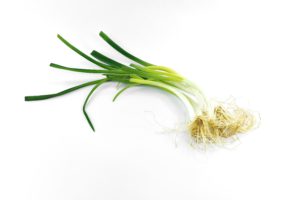
If you started chives from clumps, you don’t have to wait very long. Still, it’s a good idea to give your plants a week or two to get established. Just like with transplanting seeds, wait until they’re six inches tall (unless they were long when transplanted).
You only really want to harvest the leaves. Use a sharp, clean pair of pruning shears (or some really tough scissors). Cut most of the chive leaves, but leave an inch or two. Outdoors, you’d cut based on the soil level. In hydroponics, just cut so you leave an inch or two of length above the grow media.
Then, keep caring for them as normal. Chives grow back to be harvested again within two to three weeks.
One of the Most Profitable Hydroponic Plants
It might surprise you to find out that chives are one of the most profitable plants to grow hydroponically. Rather than using the dried, crushed versions you can find in the grocery spice aisle, many people (and restaurants) are turning to fresh chives. Not only are they resistant to a range of conditions, they’re also a natural pest repellent and butterfly attractor.
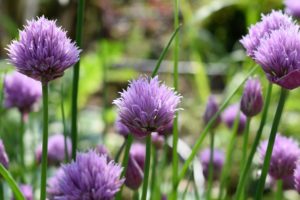
Buying fresh local produce keeps for longer than produce shipped over long distances. And because hydroponics delivers the perfect mix of nutrients and environmental conditions, the flavor is better too. Depending on the market, fresh chives often sell at $14 per pound.
Since you can also consistently harvest, and multiply your crops, you may also end up with a lot of extra. That’s not to mention how easy and vigorous growing chives are.
What About Garlic Chives?
These are the other most common variety. Garlic chives are very similar to the common variety, although they’re used more often in asian cuisine. And just like the common variety, they’re extremely hardy, long lived, and easy to grow. However, this variety gives higher yields, and should be harvested every three to eight weeks. In their first year, most growers cut more sparingly to allow more foliage growth.

You can start this chive variety from seed or clumps too.
They work in the same systems as common chives, although they can use up to 17 hours of light daily. Garlic chives also have fairly large root systems, so keep an eye out to make sure they don’t get matted and tangled. Matted roots are a recipe for fungal issues.
Frequently Asked Questions
Can I grow store bought chives in hydroponics?
Chives are actually one of the few plants that you can do this with. Of course, if you’re only buying the leafy part, it won’t work out. But, since most bundles are sold with the little bulbs still attached to the leaf, it works. Most people discard the bulb (root portion) and cook with the leaves. As long as the bulbs are in good condition, go ahead and transplant.
How long do chives live?
Common chives can live for up to three years, or even longer under good conditions. Garlic chives give you even more time to keep harvesting. Those can live over four years. While they also need more light, they’re otherwise very similar. Whichever variety you choose, chives are a plant that likes to have a dormant stage. You can continually harvest, but giving them time to rest once in a while produces better leaves (and flavor).
